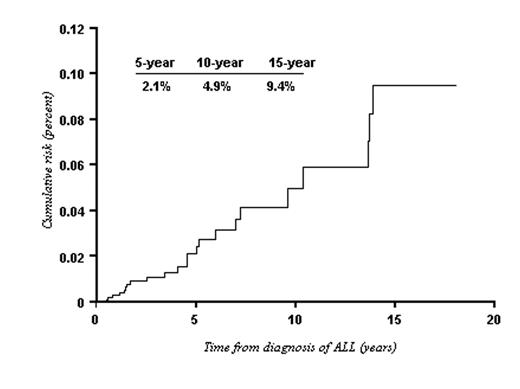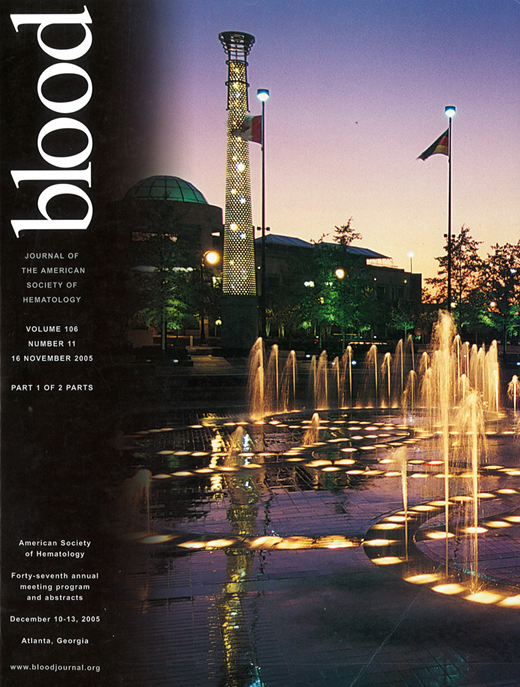Abstract
Second malignant neoplasms are a serious complication after successful treatment of childhood ALL. Although treatment intensity and outcome were not comparable, with improvements in survival, it is important to evaluate the rate and the type of second neoplasms in adults with ALL. We analyzed the data from the GET-LALA group. A cohort of 1493 patients, aged 15 to 60 years and enrolled on two successive multicenter protocols between 1987 and 2002, was observed to determine the incidence of second neoplasms and associated risk factors. The median follow-up time from diagnosis was 6 years. By February 2005, secondary or concomitant neoplasms were documented in 23 patients (median age: 36 years, range:18–57) including 9 acute myeloid leukemias, 4 non Hodgkin lymphomas, 5 skin tumors, and 5 other solid tumors (1 lung cancer, 1 tongue carcinoma, 1 thymoma, 1 condrosarcoma, 1 histiocytosis). Neoplasms developed 0.5 to 13.8 years (median, 4.5 years) after the diagnosis of ALL. 22 patients were in first remission, one was in second remission. The overall cumulative risk of secondary neoplasms was 2.1% at 5 years, 4.9% at 10 years, 9.4% at 15 years. The cumulative risk of developing a second hematologic malignancy was 1.8% at 5 years, 2.2% at 10 years, 3.3% at 18 years; that of developing a solid tumor was 0.2% at 5 years, 2.8% at 10 years, 6.2% at 15 years. The development of secondary neoplasm was not associated with the use of any specific cytotoxic agent. However, risk of skin tumor increased with radiation dose and transplantation (p = 0.01). Overall survival after the diagnosis of a second malignant neoplasm was 55% at 10 years. However, the median overall survival in patients developing acute myeloid leukemia was of 5.7 months. Considering the low-survival rate of this large unselected adult ALL cohort (32% at 10 years), considering the poorer results comparing to childhood ALL treatment, the risk of secondary or concomitant neoplasm remains probably under estimated. Larger series with long-term follow-up are, however, mandatory.
Author notes
Corresponding author


